
Eileen Gray was born on the 9th of August, 1878 to Eveleen Pounden and James Maclaren Gray, a wealthy family of south-eastern Ireland. She was the youngest of five children. Eileen’s father was a painter who encouraged his daughter’s artistic interests. He took his daughter on painting tours of Italy and Switzerland which encouraged her independent and somewhat rebellious spirit.
When 22 years old, her father died. She went to a world’s fair in Paris where Art Nouveau was the main style, Gray was a fan of the work of Charles Rennie Mackintosh, who’s work was on exhibit. Gray would go on to study art in Paris, at the Académie Julian and Académie Colarossi.
_
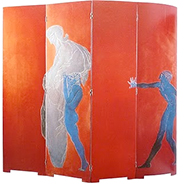
 After moving to London, Gray came across a lacquer repair shop in Soho where she asked the shop owner, Mr. D. Charles, to show her the fundamentals of his work. She later returned to Paris and met one of her employers former contacts, Seizo Sugawara. He originated from an area of Japan that was known for its decorative lacquer work.
After moving to London, Gray came across a lacquer repair shop in Soho where she asked the shop owner, Mr. D. Charles, to show her the fundamentals of his work. She later returned to Paris and met one of her employers former contacts, Seizo Sugawara. He originated from an area of Japan that was known for its decorative lacquer work.
_
Sugawara emigrated to Paris to repair the lacquer work exhibited in L’Exposition Universelle. She found after working with Sugawara for four years that she had developed the lacquer disease on her hands, she persisted though it was not until she was thirty-five when she finally exhibited her work.
 _
_
In 1914, when World War I broke out, Gray moved back to London, taking Sugawara with her. Near the end of the war, they returned to Paris and Gray was given the job of decorating an apartment in the rue de Lota. She designed most of its furniture, carpets and lamps, and secured lacquered panels to the walls. The result was favorably reviewed by several art critics who saw it as innovative.
_
_
Given a boost from the success of the apartment, Gray opened up a small shop in Paris called Jean Desert to exhibit and sell her work. It was then that many of her carpet designs were created.

Eileen Gray rug designs
Gray was highly influenced by Mies van der Rohe and Le Corbusier’s work.
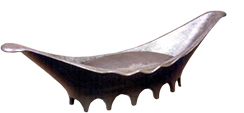 _
_
It wasn’t until she was 41 years old when she was officially credited as an interior designer and architect. She made the most of this commission, creating lamps out of parchment and ostrich eggs and her extravagant canoe sofa(pictured left).
_

_
Gray epitomized her career with the realization of E1027, a remote mansion on France’s southern coast. E for Eileen, 10 for Jean (J is the tenth letter of the alphabet), 2 for B or Badovici and 7 for Gray. The interior design welcomed in the sun and utilized the spaces in such a way as to optimize the occupant’s aesthetic experience.
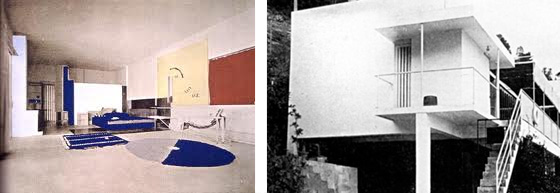
E1027
Le Corbusier wrote to Gray after a stay at E1027:
“I would be delighted to relate how much those few days spent in your house have made me appreciate the rare spirit that dictates all of its organization, both inside and outside, and has given the modern furniture and equipment a form that is so dignified, so charming, and full of wit.”
_
She eventually lost the house to her ex-lover, Jean Badovici. When she left, all that she took with her was her adjustable table.
_
_
In 1937, she agreed to exhibit her design for a holiday center in Le Corbusier’s Esprit Nouveau pavilion at the Paris Exposition.

Le Corb, in his cabin
_
Some would argue that Le Corbusier became obsessed with Gray, a simple Irish girl, who had achieved what he, an acclaimed designer, so desperately sought. Gray’s saying “entrez lentement” or “enter slowly” can be seen in Le Corbusier’s work. Corbusier purchased a small cabin behind E1027 and eventually, E1027 itself. He later died of a heart attack while swimming in the water right in front of the mansion.
_
Gray designed and furnished another apartment not very far from E1027, titled Tempe à Pailla.
During World War II Gray, along with all other foreigners, was forced to evacuate the coast of France and move inland. After the war, she discovered that Tempe à Pailla had been blown up and E1027 looted.

Recent photographs of a dilapidated E1027
Gray would return to Paris to lead a reclusive life. She continued to work on new projects, but was almost forgotten by the design industry. When she was around seventy, she started to lose her sight and hearing, yet when she was eighty, she transformed an agricultural shed outside Saint-Tropez into a summer home; she soon moved there and continued to work. Shortly before her death, Gray’s work was shown in an exhibition in London. In October of 1976, at the age of ninety-eight, Gray died in her apartment on rue Bonaparte in Paris.
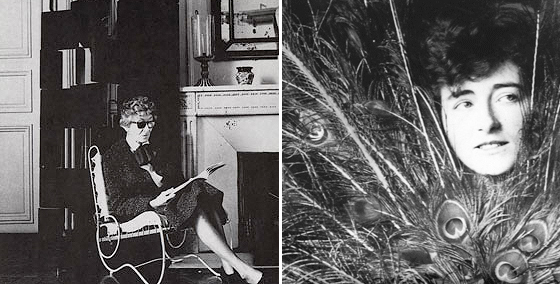

_
In February of 2009, her “Dragons” armchair made around 1918(image left), acquired by her early patron Suzanne Talbot and later part of the Yves Saint Laurent and Pierre Bergé collection, was sold at auction in Paris for 21.9 million Euros, setting an auction record for 20th century decorative art.
_
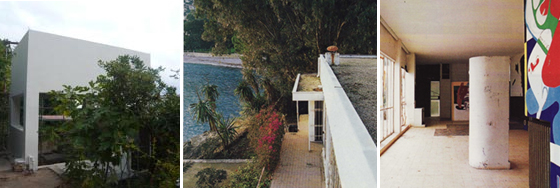
E1027 is currently undergoing major restoration. If you would like to help, click here.
_

Daybed, Tube Light, Occasional table, and the Bibendum chair are only a few of Gray’s designs still in production.
_
Share this post on Twitter or Facebook:
























